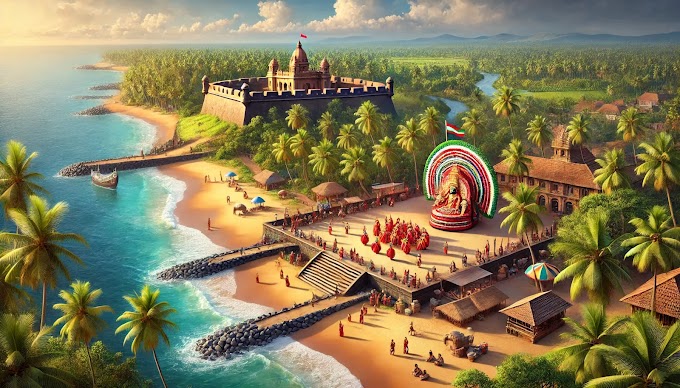Discover the History, Architecture, and Best Time to Visit Jama Masjid, Delhi
Introduction: Jama Masjid, also known as Masjid-i-Jahan-Numa, stands as one of the largest and most magnificent mosques in India. Located in Old Delhi, this architectural masterpiece was commissioned by the Mughal emperor Shah Jahan and completed in 1656 AD. Built with red sandstone and white marble, the mosque's grand structure dominates the bustling streets of Chawri Bazaar. It is not only a religious site but also a significant symbol of India’s Mughal heritage, offering visitors a glimpse into the country’s rich history.
History of Jama Masjid:
Jama Masjid was the final grand architectural project undertaken by Shah Jahan, who also built the Taj Mahal and Red Fort. Over 5000 artisans contributed to the construction, which took six years to complete, from 1650 to 1656 AD. The mosque was designed by Ustad Khalil and was inaugurated by Syed Abdul Ghafoor Shah Bukhari, a mullah from Bukhara, in the presence of Shah Jahan. The total cost to build the Jama Masjid amounted to 1 million rupees, a substantial sum at the time.
Jama Masjid was designed to be the central mosque of Shah Jahan’s new capital, Shahjahanabad (Old Delhi). It remains a major hub for Islamic worship in India, with its vast courtyard capable of accommodating 25,000 worshippers at once. The mosque plays a significant role in Islamic festivals, particularly during Eid and Ramadan, when it becomes the focal point for thousands of Muslims offering special prayers.
Architectural Splendor:
The mosque is an awe-inspiring example of Mughal architecture, featuring three imposing marble domes and two soaring minarets, each standing 40 meters high. The mosque's design follows an Islamic tradition, facing west towards Mecca. It is accessible via flights of stairs from three grand entrances: the eastern gate (the royal entrance), the northern gate, and the southern gate. The massive eastern gate remains closed on weekdays but is open during special occasions.
Inside, the mosque houses an impressive prayer hall, which is adorned with seven arched entrances and intricate Persian calligraphy. The walls are lined with marble up to waist height, while the upper portions feature beautiful inlays and inscriptions. The southern minaret is open to the public for a small fee, offering a stunning panoramic view of Delhi, including landmarks such as Connaught Place and Parliament House.
The courtyard, which measures 408 square feet, features a large ablution tank known as the Hauz in its center. This tank is used by worshippers for ritual cleansing before prayers. The surrounding colonnades and arches add to the mosque’s grandeur, making it a must-visit destination for architecture enthusiasts.
Best Time to Visit Jama Masjid:
Jama Masjid can be visited year-round, but the best time to visit is during the cooler months from November to February when the weather in Delhi is more pleasant. Visiting during Eid or Ramadan offers a unique and vibrant experience, as the mosque is filled with worshippers and the surrounding markets are lively with festivities.
Visiting Timings and Entry Fees:
- Timings: The mosque is open daily from 7:00 AM to 12:00 PM, and from 1:30 PM to 6:30 PM. Tourists are not allowed during prayer times.
- Entry Fee: There is no entry fee to visit Jama Masjid, but photography inside the mosque is charged at ₹300, and climbing the southern minaret costs ₹100.
How to Reach Jama Masjid:
- Nearest Metro Station: Chawri Bazaar Metro Station on the Yellow Line is the closest station to the mosque.
- By Road: The mosque is easily accessible by taxis, rickshaws, and buses. It is located near other major landmarks, including the Red Fort and Chandni Chowk.
Nearby Attractions:
- Chandni Chowk: A bustling market known for its food, shopping, and historical significance.
- Red Fort: Another Mughal marvel located just 1 km from Jama Masjid, making it easy to visit both in one day.
- Meena Bazaar: A nearby market offering traditional clothing, jewelry, and street food.
Conclusion:
A visit to Jama Masjid offers an unparalleled glimpse into the architectural brilliance and cultural richness of Mughal India. Whether you’re fascinated by the grandeur of its structure or the spiritual atmosphere, Jama Masjid is a must-see destination in Delhi. Explore its towering minarets, soak in the peaceful ambiance, and witness the bustling life in the surrounding Old Delhi area.







